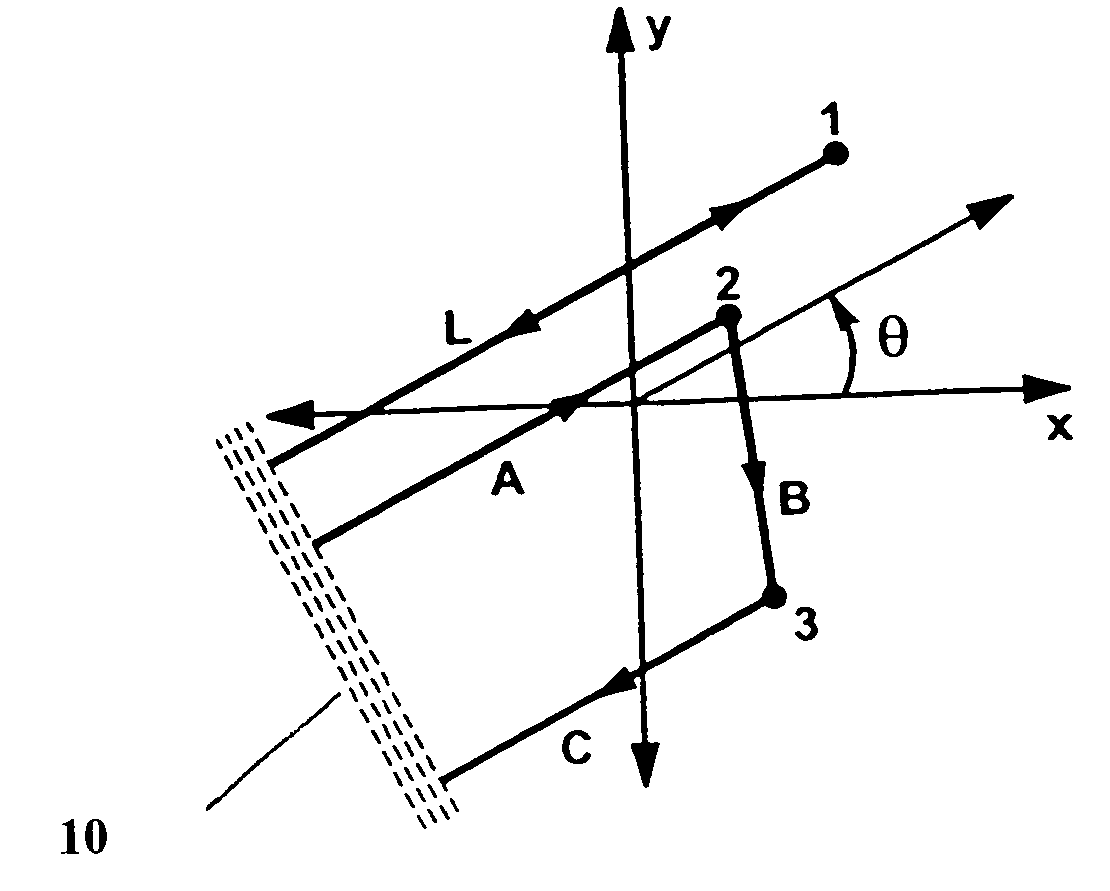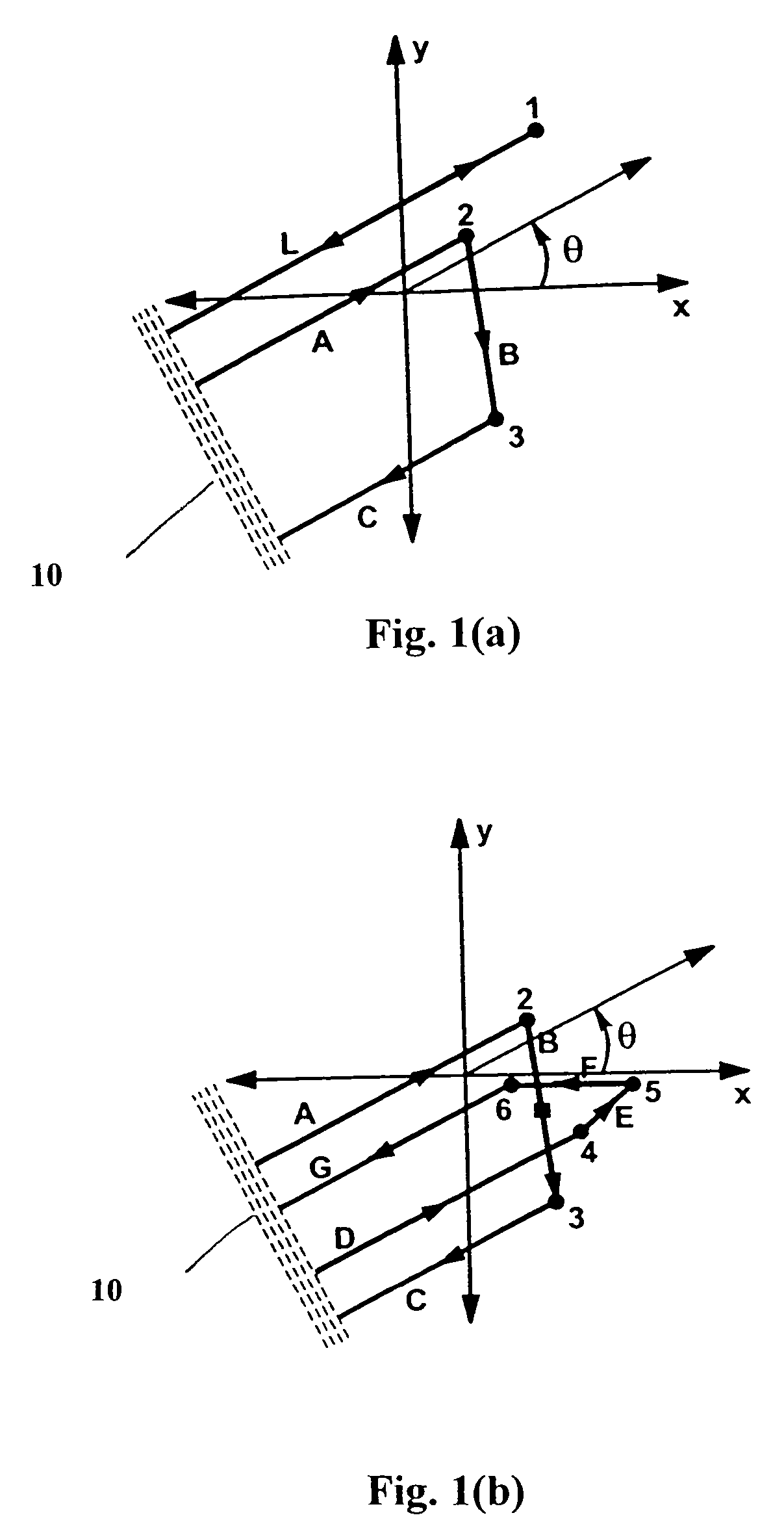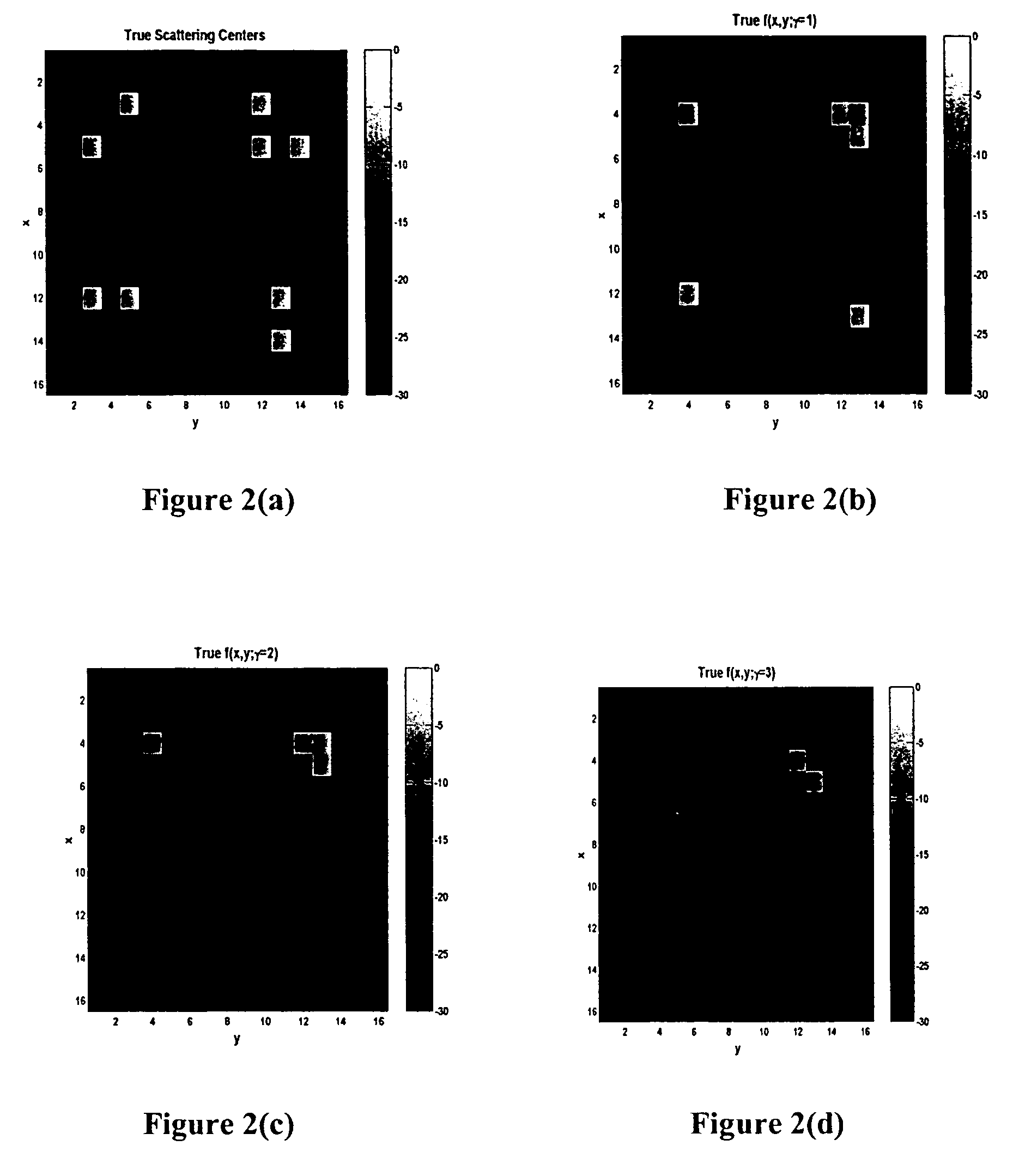Process for mapping multiple-bounce ghosting artifacts from radar imaging data
a radar imaging and artifact technology, applied in the field of radar image formation, can solve the problems of insufficient prior art process, complex process, and difficult time, and achieve the effect of extending the field of use and facilitating the identification of features of interes
- Summary
- Abstract
- Description
- Claims
- Application Information
AI Technical Summary
Benefits of technology
Problems solved by technology
Method used
Image
Examples
Embodiment Construction
[0025] In a preferred embodiment of the present invention, the imaging process assumes the condition that a scattered waveform has the same characteristics as the incident waveform. In the context of SAR imaging, the measured range to target (i.e., assumed object-of-interest) of a given multiple bounce (MB) scattering event at some aperture angle is identical to that of an equivalent single bounce (SB) scattering event. FIG. 1a presents an example of such equivalent scattering events. In this example, the transmitter is co-located with the receiver (both shown as 10) at a large distance from the region-of-interest, so that the effects of a curved wave front can be neglected. One skilled in the art recognizes that the process described herein may be adjusted for non co-located transmitter and receiver configurations, as well as for distances from the region of interest which result in curved wavefronts. FIG. 1a shows that waveform traverses a total distance of 2L in propagating from ...
PUM
 Login to View More
Login to View More Abstract
Description
Claims
Application Information
 Login to View More
Login to View More - R&D
- Intellectual Property
- Life Sciences
- Materials
- Tech Scout
- Unparalleled Data Quality
- Higher Quality Content
- 60% Fewer Hallucinations
Browse by: Latest US Patents, China's latest patents, Technical Efficacy Thesaurus, Application Domain, Technology Topic, Popular Technical Reports.
© 2025 PatSnap. All rights reserved.Legal|Privacy policy|Modern Slavery Act Transparency Statement|Sitemap|About US| Contact US: help@patsnap.com



